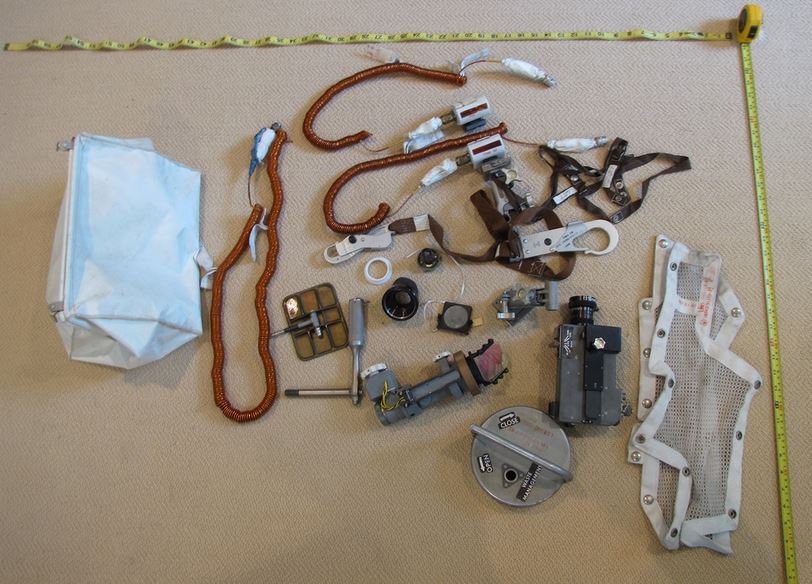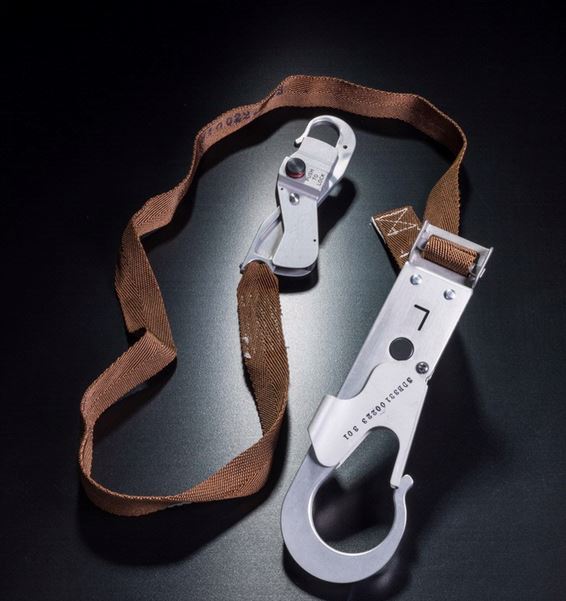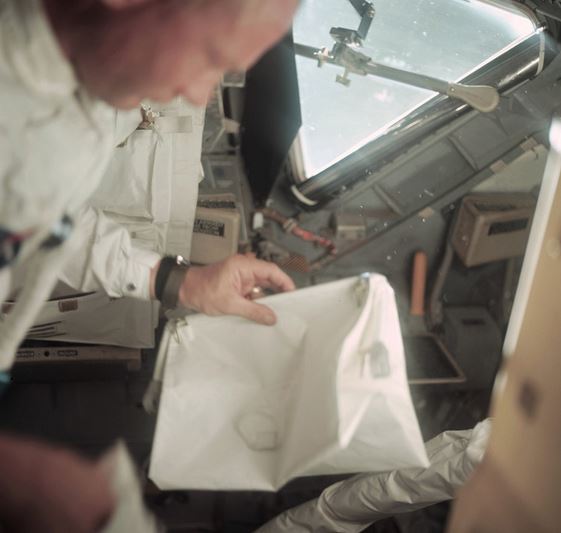Astronaut, the late Neil Armstrong (1930-2012), had stashed a white Temporary Stowage Bag used during the Apollo 11 mission in his closet, and there it lay hidden for 45 years until his wife, Carol Armstrong found it a few months after he died.
Neil Armstrong, the first human being to set foot on the moon, died in 2012 following complications related to heart surgery. Mrs. Armstrong was checking through his closet when she came across a white bag.
Mrs. Armstrong had a feeling the bag and its contents may have come from her husband’s space mission to the Moon, so she contacted the curator of the Space History Department at the Smithsonian National Air and Space Museum, Allan Needell.

The McDivitt Purse had been stashed in Mr. Armstrong’s closet for 45 years. (Image: National Air and Space Museum, Smithsonian Institution)
She also sent a photograph of the bag and all its contents, which she had spread out on her carpet.
Mr. Needell could not contain his excitement when he first saw the photograph, and thought about the prospect of receiving mementos from the Lunar Module Eagle during the historic Apollo 11 mission.
He contacted Ken Glover and Eric Jones, plus a group of experts who had put together the Apollo 11 Lunar Surface Journal, to help confirm what he and Mrs. Armstrong suspected.
Bag’s name in honor of Jim McDivitt
The bag was identified straight away. Officially called a Temporary Stowage Bag, the astronauts used to call it a McDivitt Purse. It was stowed in the Lunar Module during launch.
The astronauts had named it in honor of Jim McDivitt, the Apollo 9 Commander who had wanted a stowage bag that could be placed at the front of the spacecraft to hold items, such as purge valves, which could otherwise fall to the cabin floor while they were preparing EVAs.
The experts also identified the bag’s contents – an 80mm Hasselblad camera, netting, mirrors, metal clips and tethers. They confirmed they were all from the Apollo 11 Lunar Module Eagle.

Mrs. Armstrong suspected the bag’s contents were related to her late husband’s Lunar Mission. She placed them on a carpet, took a photograph and sent it to Mr. Needell. (Image: National Air and Space Museum, Smithsonian Institution)
Before leaving the Moon’s surface, Mr. Armstrong is believed to have used the tether and metal clip to secure his legs while he was resting.
The following Apollo 11 mission transcript includes a mention of the McDivitt Purse by Mr. Armstrong:
“You know, that – that one’s just a bunch of trash that we want to take back – LM parts, odds and ends, and it won’t stay closed by itself; we’ll have to figure something out for it.”

The astronauts used this tether while exiting and reentering their lunar module. They also used them to secure themselves or their equipment to the spacecraft during tricky procedures. (Image: National Air and Space Museum, Smithsonian Institution)
“In the future, we hope to complete documenting and cataloging the entire collection of items and, as appropriate, to place them on public display. Seeing such things with one’s own eyes helps us to appreciate that these accomplishments are not just in history books or movies, but involved real people and real things, and that they involved an extraordinary amount of detailed engineering and planning.”
Mr. Needell believes Mr. Armstrong never discussed the existence of the bag or its contents with anybody in the forty-five years since he returned from the Moon. Every item has its own story and significance. They are described in an addendum to the Apollo 11 Lunar Surface Journal.
For four-and-a-half decades his bag had remained hidden in the closet and nobody knew, not even Mr. Armstrong’s biographer.

Buzz Aldrin holding the McDivitt Purse during a LM inspection at about 55 hours 41 minutes into the Apollo 11 mission on the way out to the Moon. (Image: Apollo 11 Lunar Surface Journal)
